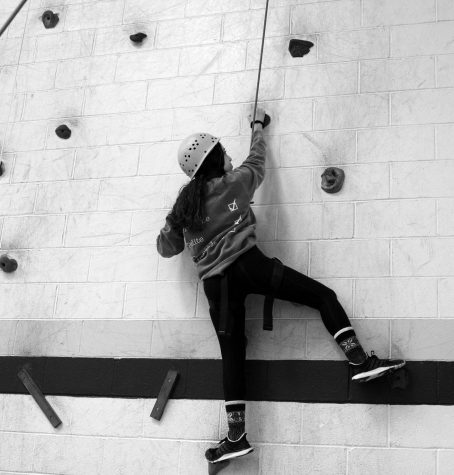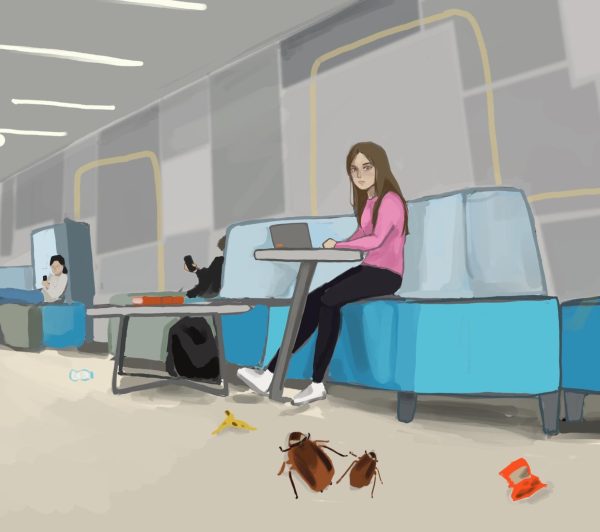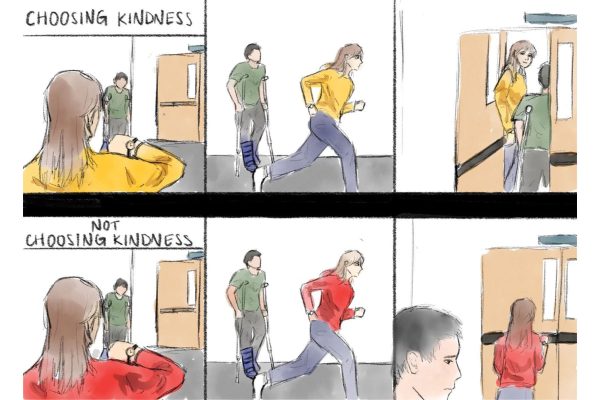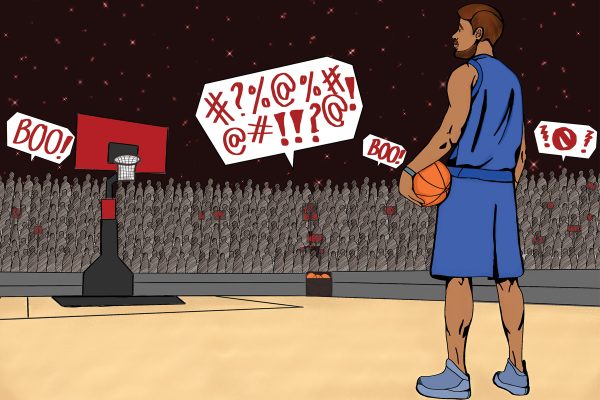How to have the climb of your life

Nobody wants to plummet to his or her death.
Even if you are terrified of heights and have sworn off climbing, you need a belay system. We all do.
What is a belay system?
A belay system is designed to keep climbers from falling. If climbers feel unsteady, having people looking out for them from below gives climbers the confidence they need to persevere.
Why do you need a belay system?
When met with challenges of all altitudes, you need to know that there are people on the ground who you can rely on. Just as a belay system is necessary to a climber’s safety and well-being, a support system is essential to our daily lives.
What you’ll need
Belayer: Someone who controls the rope to make sure the climber is safe and feels secure. They watch and listen intently as the climber ascends, either loosening or tightening the rope at the climber’s request.
Anchors: People who are attached to the belayer, countering the rope’s force by weighing the belayer and climber down. Though anchors don’t have direct control over the rope, they ensure the climber’s safety.
Rope: A strong cord that connects all elements of the belay system. Belayers hold the rope at the bottom of the wall, keeping climbers assured in their harnesses as they make their way up the wall.
Facing the wall
Never face the wall alone. You can’t be successful while worrying about losing your grip on the coarse rocks and plunging toward the earth. Give and accept support.
Support comes from someone who is there for you whether you’re almost at the top of the wall or dangling in mid-air. It’s someone keeping you grounded when you’re on the verge of slipping. It’s someone who will always listen to your silly rants or tag you in memes to put a smile on your face.
Support is non-judgmental, completely empathetic, good old-fashioned friendship.
And you don’t need expensive ropes or carabiners to get it.
When climbers need tension
Hold the rope as tight as possible when your friends need it most.
As climbers scale the wall, it becomes more difficult to maintain physical and emotional strength. They will feel better about pushing on if they know they’re in good hands.
Does your friend have a big test coming up? Offer to help them study and call afterwards to see how it went. The simplest check-ins tell your friends that you listen and care. Whether you motivate climbers to keep going or tug the rope as a reminder that you’re looking out for them, make sure the people closest to you feel secure and confident.
When climbers need slack
Climbers communicate to those below by shouting “Slack!” when they need the rope to be loosened. When they do, don’t hesitate to loosen your grasp. Pulling the rope too tight can be more damaging than helpful.
Instead of pulling climbers to the top, allow them space to push themselves higher. After all, achieving our goals is so much more rewarding when we touch the top ourselves.
Pay close attention and respect your friends’ needs. Don’t take it personally when they say they don’t want to talk — some people just need to untangle issues on their own first.
Sometimes being there for someone is knowing when to step away.
Reaching the top
No matter how skilled climbers may seem, a belay system is vital to their safety and confidence on the path to achievement. All it takes is a tightening in your harness, a quick check-in with a friend as a reminder that you will catch them if they fall. It’s looking toward the goal in the midst of a challenge, knowing that you’re in good hands while concentrating on self-betterment.
Even before you reach the top, it’s much easier to focus on the journey if you know that you will always have a shoulder to cry on.
As Miley Cyrus once sang, “It’s the climb.”







